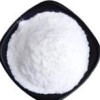Magnesium Trisilicate Manufacturer Exporter BP Ph Eur USP FCC Food Grade Manufacturer Exporter
Crystal Clear Products is a manufacturer exporter company manufacturing several chemicals including Magnesium Trisilicate and IP BP Ph Eur USP NF JP ACS AR Analytical Reagent FCC Food Grade, Pharmaceutical Chemicals at best prices. The group has offices and factories in India USA and UAE and toll manufacturers in China and sells to almost every country in the world.
The manufacturing facilities of our partner manufacturers have one or more of FDA-cGMP-GLP certification, ISO-9001 certification, Halal and/or Kosher certification, REACH pre-registration ISO-22000 HACCP. We also allow third party inspection of products offered. We can offer small quantities from laboratory and trial packs to large shipments of container loads of material.
Hazard Statements:
Not a hazardous substance or mixture according to Regulation (EC) No. 1272/2008.
This substance is not classified as dangerous according to Directive 67/548/EEC.
Not considered hazardous by the OSHA Hazard Communication Standard (29 CFR 1910.1200)
Signal Word: None
Transport Information
DOT USA, TDG Canada & ADR/RID Europe: Not dangerous goods.
IMO/IMDG: Not dangerous goods.
IATA/ICAO: Not dangerous goods.
You may please visit:
Magnesium Trisilicate SDS of Manufacturers
Magnesium Trisilicate IP BP Ph Eur USP NF FCC Food AR ACS Reagenr Grade Manufacturers

CAS Number 14987-04-3 Anhydrous and 39365-87-2 for hydrate Magnesium Trisilicate, EINECS: 239-076-7, Molecular Weight: 260.86, Chemical Formula: Mg2O8Si3
Magnesium Trisilicate USP Grade specifications
2MgO3SiO2xH2O -- (anhydrous) 260.86
Silicic acid (H4Si3O8), magnesium salt (1:2), hydrate.
Magnesium silicate hydrate (Mg2Si3O8xH2O) CAS 39365-87-2
Anhydrous CAS 14987-04-3
Magnesium Trisilicate is a compound of Magnesium Oxide and silicon dioxide with varying proportions of water. It contains not less than 20.0 percent of magnesium oxide (MgO) and not less than 45.0 percent of silicon dioxide (SiO2).
Identification:
A: Mix about 500 mg with 10 mL of 3 N hydrochloric acid, filter, and neutralize the filtrate to litmus paper with 6 N ammonium hydroxide: the neutralized filtrate responds to the tests for Magnesium.
B: Prepare a bead by fusing a few crystals of sodium ammonium phosphate on a platinum loop in the flame of a Bunsen burner. Place the hot, transparent bead in contact with Magnesium Trisilicate, and again fuse: silica floats about in the bead, producing, upon cooling, an opaque bead with a web-like structure.
Water: Weigh accurately about 1 g in a tared platinum crucible provided with a cover. Gradually apply heat to the crucible at first, then strongly ignite to constant weight: it loses between 17.0% and 34.0% of its weight.
Soluble salts: Boil 10.0 g with 150 mL of water for 15 minutes. Cool to room temperature, allow the mixture to stand for 15 minutes, filter with the aid of suction, transfer the filtrate to a 200-mL volumetric flask, dilute with water to volume, and mix. Evaporate 50.0 mL of this solution, representing 2.5 g of the Trisilicate, in a tared platinum dish to dryness, and ignite gently to constant weight: the weight of the residue does not exceed 38.0 mg (1.5%).
Chloride: A 20-mL portion of the diluted filtrate prepared in the test for Soluble salts, representing 1 g of Magnesium Trisilicate, shows no more chloride than corresponds to 0.75 mL of 0.020 N hydrochloric acid (0.055%).
Sulfate: Treat the residue obtained in the test for Soluble salts with 2 mL of hydrofluoric acid, and evaporate on a steam bath to dryness. Mix the residue with water, transfer to a filter, and wash, using approximately 50 mL of water for the complete procedure. Heat the filtrate to boiling, and add 0.1 mL of hydrochloric acid and 5 mL of barium chloride TS. Maintain the mixture near its boiling point for 1 hour, filter, wash the precipitate thoroughly with water, dry, and ignite to constant weight: the weight of the residue does not exceed 30 mg (0.5%).
Free alkali: Add 2 drops of PhPh TS to 20 mL of the diluted filtrate prepared in the test for Soluble salts, representing 1 g of the Trisilicate: if a pink color is produced, not more than 1.0 mL of 0.10 N hydrochloric acid is required to discharge it.
Arsenic: 8 ppm.
Heavy metals: the limit is 0.003%.
Acid-consuming capacity: Weigh accurately about 200 mg into a glass-stoppered, 125-mL conical flask. Add 30.0 mL of 0.1 N hydrochloric acid VS and 20.0 mL of water. Place the flask in a bath maintained at 37 , and shake the mixture occasionally during a period of 4 hours but leave the mixture undisturbed during the last 15 minutes of the heating period. Cool to room temperature. To 25.0 mL of the supernatant add methyl red TS, and titrate the excess acid with 0.1 N sodium hydroxide VS. One g of Magnesium Trisilicate, calculated on the anhydrous basis, consumes not less than 140 mL and not more than 160 mL of 0.10 N hydrochloric acid.
Ratio of SiO2 to MgO: between 2.10 and 2.37.
Magnesium Trisilicate BP Ph Eur Grade Specifications
DEFINITION
It has a variable composition corresponding approximately to Mg2Si3O8,xH2O.
Content:
magnesium oxide: minimum 29.0 per cent (ignited substance),
silicon dioxide: minimum 65.0 per cent (ignited substance).
CHARACTERS
Appearance: White or almost white powder.
Solubility: Practically insoluble in water and in ethanol (96 per cent).
IDENTIFICATION
A. 10.25 g gives the reaction of silicates.
B. 1 ml of solution S (see Tests) neutralized with dilute sodium hydroxide solution gives the reaction of magnesium.
TESTS
Solution S: To 2.0 g add a mixture of 4 ml of nitric acid and 4 ml of distilled water. Heat to boiling with frequent shaking. Add 12 ml of distilled water and allow to cool. Filter or centrifuge to obtain a clear solution and dilute to 20 ml with distilled water.
Alkalinity: To 10.0 g in a 200 ml conical flask, add 100.0 g of water and heat on a water-bath for 30 min. Allow to cool and make up to the initial mass with water R. Allow to stand and filter or centrifuge until a clear liquid is obtained. To 10 ml of this liquid add 0.1 ml of PhPh solution. Not more than 1.0 ml of 0.1 M hydrochloric acid is required to change the colour of the indicator.
Water-soluble salts: Maximum 1.5 per cent. In a platinum dish, evaporate to dryness on a water-bath 20.0 ml of the liquid obtained in the test for alkalinity. The residue, ignited to constant mass at 900±50C, weighs a maximum of 30 mg.
Chlorides: Maximum 500 ppm.
Sulphates: Maximum 0.5 per cent.
Arsenic: Maximum 4 ppm, determined on 2.5 ml of solution S.
Heavy metals: Maximum 40 ppm.
Loss on ignition: 17 per cent to 34 per cent, determined on 0.5 g by ignition to constant mass at 900± 50C in a platinum crucible.
Acid-absorbing capacity: Suspend 0.25 g in 0.1 M hydrochloric acid , dilute to 100.0 ml with the same acid and allow to stand for 2 h in a water-bath at 37 ± 0.5C, with frequent shaking. Allow to cool. To 20.0 ml of the supernatant solution add 0.1 ml of bromophenol blue solution and titrate with 0.1 M sodium hydroxide until a blue colour is obtained. The acid-absorbing capacity is not less than 100.0 ml of 0.1 M hydrochloric acid per gram.
Magnesium Silicate FCC Food Grade Specifications
Synthetic Magnesium Silicate
INS: 553(i) CAS 1343-88-0
DESCRIPTION
Magnesium Silicate occurs as a very fine, white powder free from grittiness. It is a synthetic, usually amorphous form of magnesium silicate in which the molar ratio of magnesium oxide (MgO) to silicon dioxide (SiO2) is approximately 2:5. It is insoluble in water and in alcohol, but is readily decomposed by mineral acids. The pH of a 1:10 slurry is between 7.0 and 10.8.
Function: Anti-caking agent; filter aid.
REQUIREMENTS
Identification:
A. Mix about 500 mg of sample with 10 mL of 2.7 N hydrochloric acid, filter, and neutralize the filtrate to litmus paper with 6 N ammonium hydroxide. The neutralized filtrate gives positive tests for Magnesium.
B. Prepare a bead by fusing a few crystals of sodium ammonium phosphate on a platinum loop in the flame of a Bunsen burner. Place the hot, transparent bead in contact with a sample, and again fuse. Silica floats about in the bead, producing, upon cooling, an opaque bead with a web-like structure.
Assay: Not less than 15.0% of MgO and not less than 67.0% of SiO2, calculated on the ignited basis.
Fluoride: Not more than 10 mg/kg.
Free Alkali (as NaOH): Not more than 1%.
Lead: Not more than 5 mg/kg.
Loss on Drying and Loss on Ignition: Not more than the percentage stated or within the range claimed by the vendor.
Soluble Salts: Not more than 3.0%.
Contact for Monograph, Uses, Matnfacturing Process, etc of Magnesium Trisilicate and JP IP BP Ph Eur USP NF FCC Food AR ACS Reagent Grade Manufacturer Supplier Exporter
MANUFACTURER EXPORTER
MUMBAI 400009, INDIA. TEL: (OFFICE) 91-9322665100
info@manufacturerexporter.com
Copyright and Usual Disclaimer is Applicable
Last updated
11/19/2022
Manufacturer Suppliers Exporters at Wholesale Prices from India USA and around the Globe
Magnesium Acetate -- Magnesium Butyrate -- Magnesium Aluminum Silicate Manufacturer -- Magnesium Borogluconate -- Magnesium Chloride Anhydrous Hexahydrate -- Magnesium Chloride IP BP USP ACS AR Analytical Reagent FCC Food Grade -- Magnesium Citrate -- Magnesium Fumarate -- Magnesium Gluconate -- Magnesium Lactate -- Magnesium Lactate Gluconate -- Magnesium Malate -- Magnesium Citrate Malate -- Magnesium Pidolate -- Magnesium Sulfate or Magnesium Sulphate -- Magnesium Trisilicate -- Magnesium Stearate -- Magnesium Alginate --






